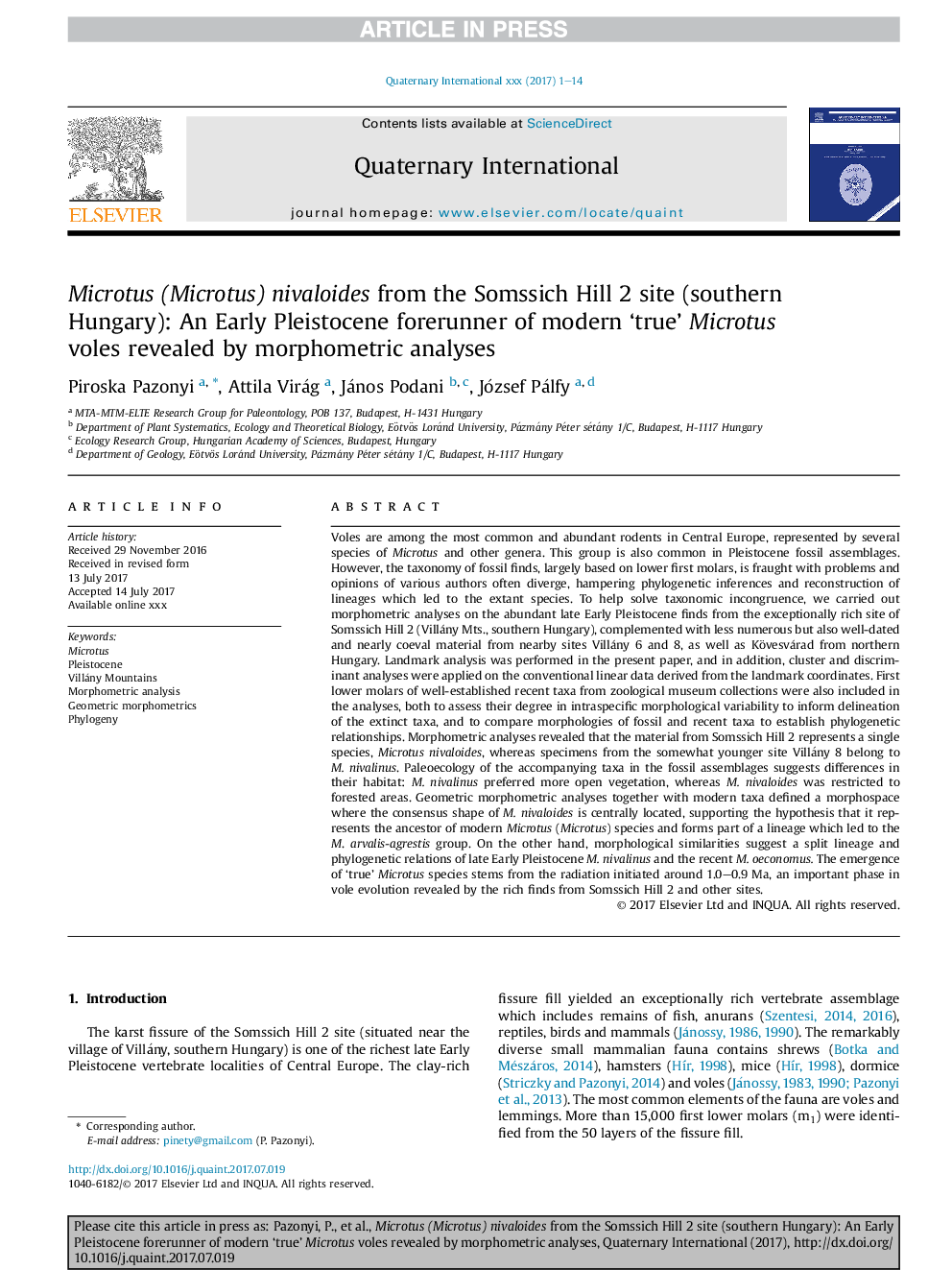| کد مقاله | کد نشریه | سال انتشار | مقاله انگلیسی | نسخه تمام متن |
|---|---|---|---|---|
| 7449287 | 1484030 | 2018 | 14 صفحه PDF | دانلود رایگان |
عنوان انگلیسی مقاله ISI
Microtus (Microtus) nivaloides from the Somssich Hill 2 site (southern Hungary): An Early Pleistocene forerunner of modern 'true' Microtus voles revealed by morphometric analyses
دانلود مقاله + سفارش ترجمه
دانلود مقاله ISI انگلیسی
رایگان برای ایرانیان
کلمات کلیدی
موضوعات مرتبط
مهندسی و علوم پایه
علوم زمین و سیارات
زمین شناسی
پیش نمایش صفحه اول مقاله

چکیده انگلیسی
Voles are among the most common and abundant rodents in Central Europe, represented by several species of Microtus and other genera. This group is also common in Pleistocene fossil assemblages. However, the taxonomy of fossil finds, largely based on lower first molars, is fraught with problems and opinions of various authors often diverge, hampering phylogenetic inferences and reconstruction of lineages which led to the extant species. To help solve taxonomic incongruence, we carried out morphometric analyses on the abundant late Early Pleistocene finds from the exceptionally rich site of Somssich Hill 2 (Villány Mts., southern Hungary), complemented with less numerous but also well-dated and nearly coeval material from nearby sites Villány 6 and 8, as well as Kövesvárad from northern Hungary. Landmark analysis was performed in the present paper, and in addition, cluster and discriminant analyses were applied on the conventional linear data derived from the landmark coordinates. First lower molars of well-established recent taxa from zoological museum collections were also included in the analyses, both to assess their degree in intraspecific morphological variability to inform delineation of the extinct taxa, and to compare morphologies of fossil and recent taxa to establish phylogenetic relationships. Morphometric analyses revealed that the material from Somssich Hill 2 represents a single species, Microtus nivaloides, whereas specimens from the somewhat younger site Villány 8 belong to M. nivalinus. Paleoecology of the accompanying taxa in the fossil assemblages suggests differences in their habitat: M. nivalinus preferred more open vegetation, whereas M. nivaloides was restricted to forested areas. Geometric morphometric analyses together with modern taxa defined a morphospace where the consensus shape of M. nivaloides is centrally located, supporting the hypothesis that it represents the ancestor of modern Microtus (Microtus) species and forms part of a lineage which led to the M. arvalis-agrestis group. On the other hand, morphological similarities suggest a split lineage and phylogenetic relations of late Early Pleistocene M. nivalinus and the recent M. oeconomus. The emergence of 'true' Microtus species stems from the radiation initiated around 1.0-0.9 Ma, an important phase in vole evolution revealed by the rich finds from Somssich Hill 2 and other sites.
ناشر
Database: Elsevier - ScienceDirect (ساینس دایرکت)
Journal: Quaternary International - Volume 481, 10 July 2018, Pages 61-74
Journal: Quaternary International - Volume 481, 10 July 2018, Pages 61-74
نویسندگان
Piroska Pazonyi, Attila Virág, János Podani, József Pálfy,